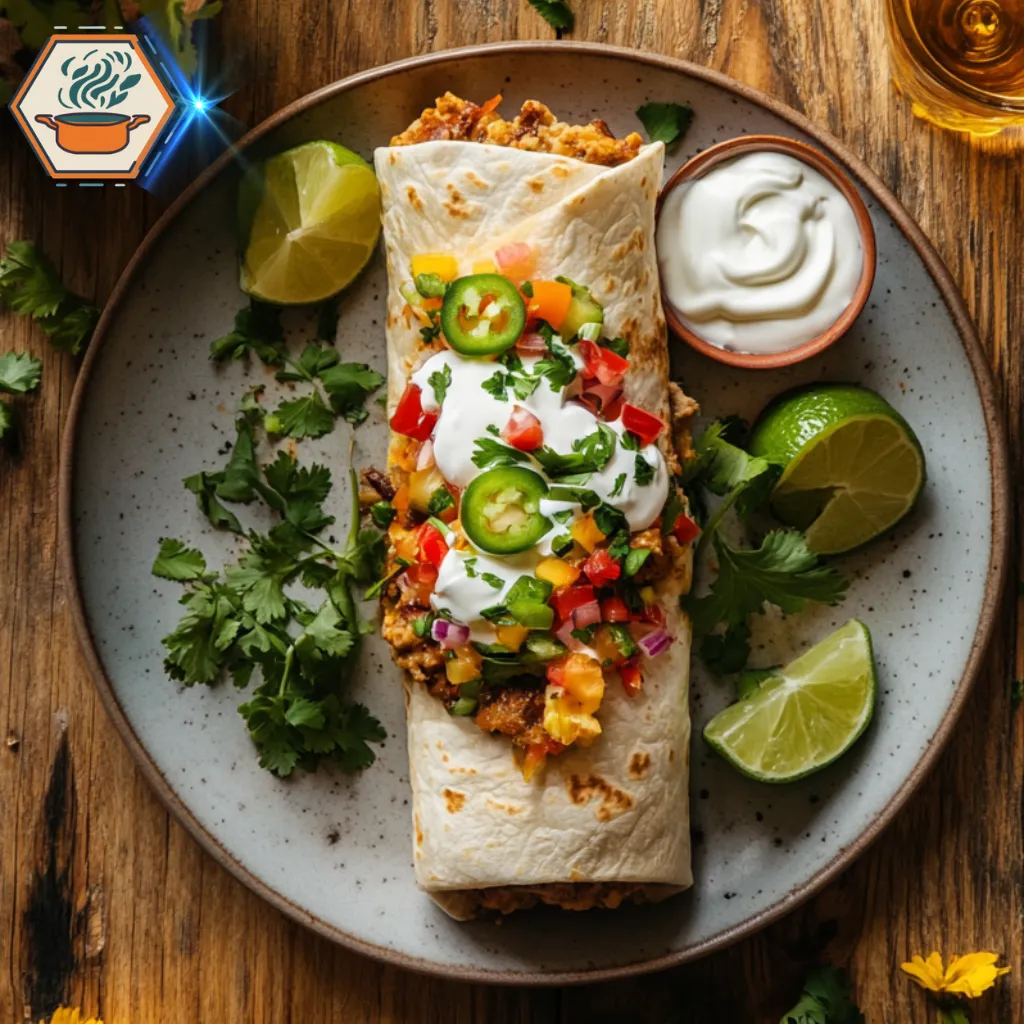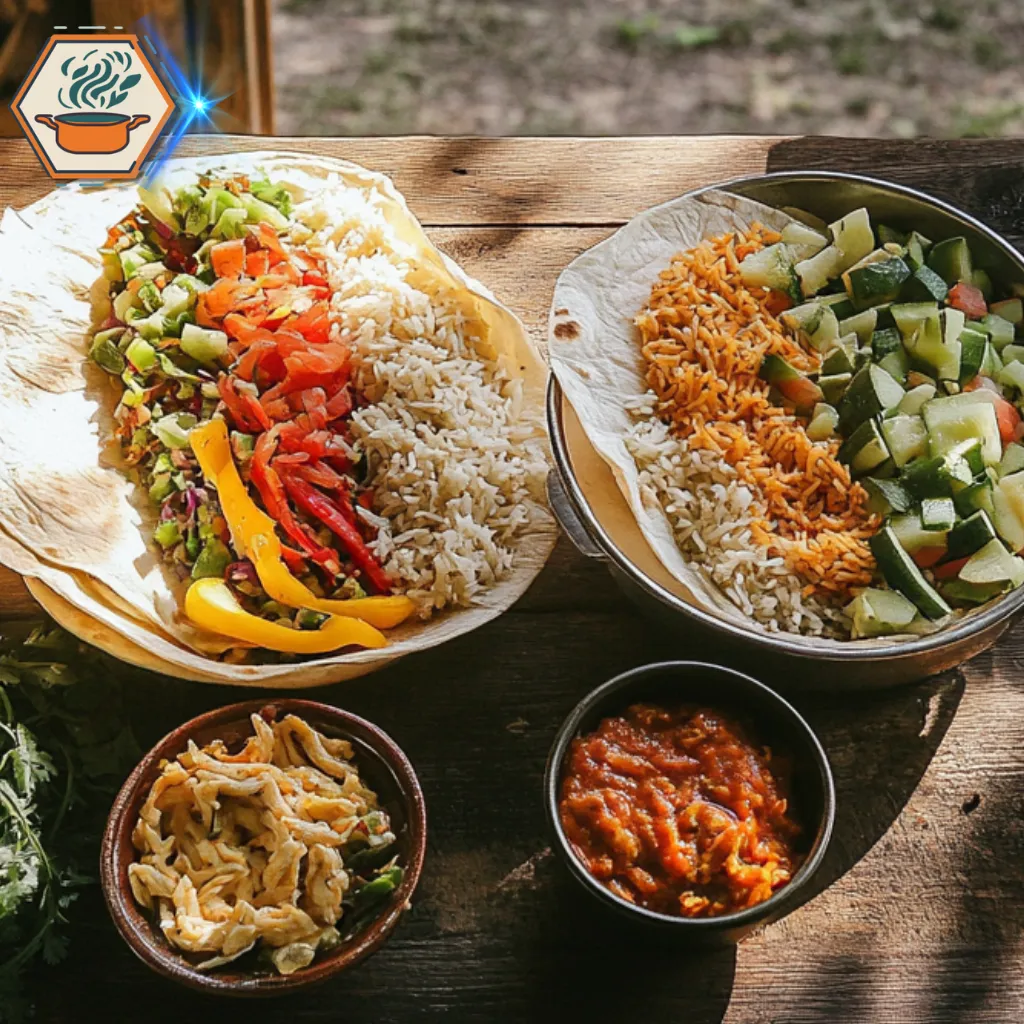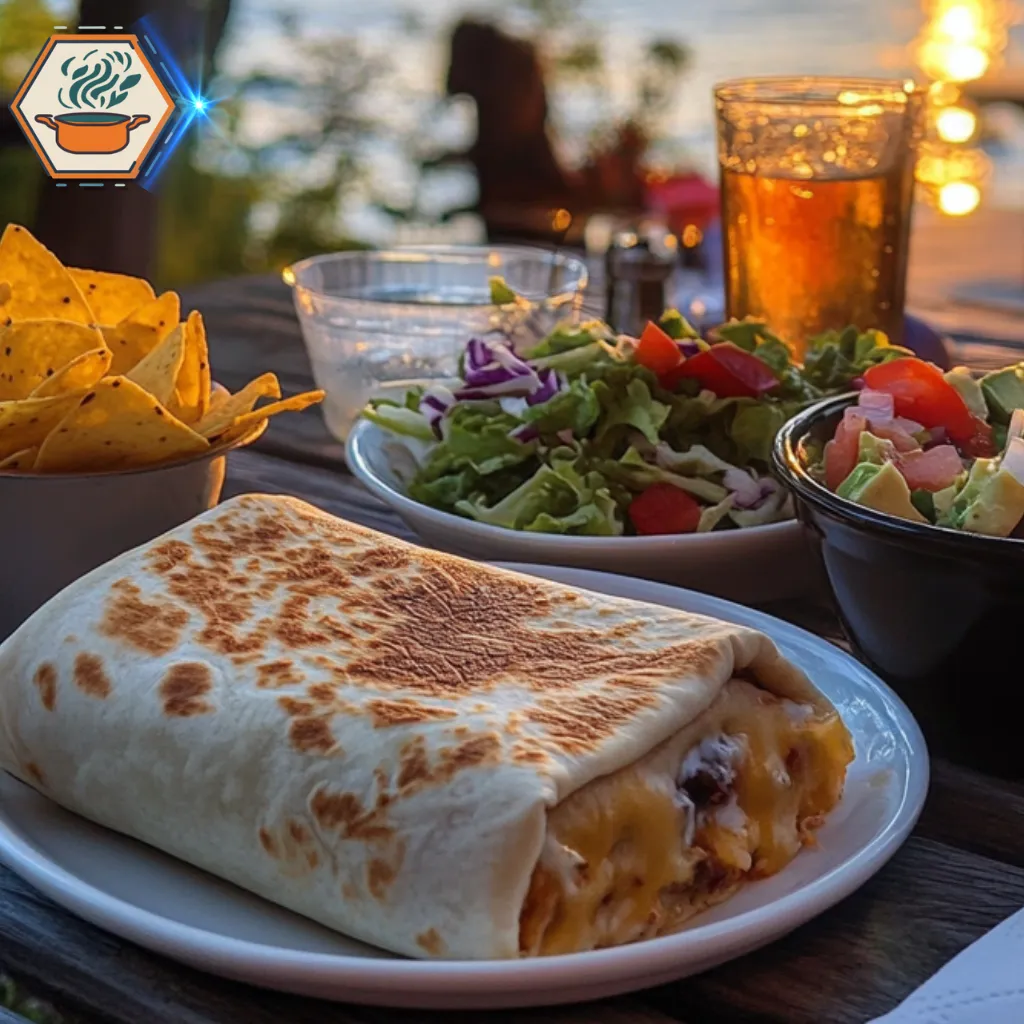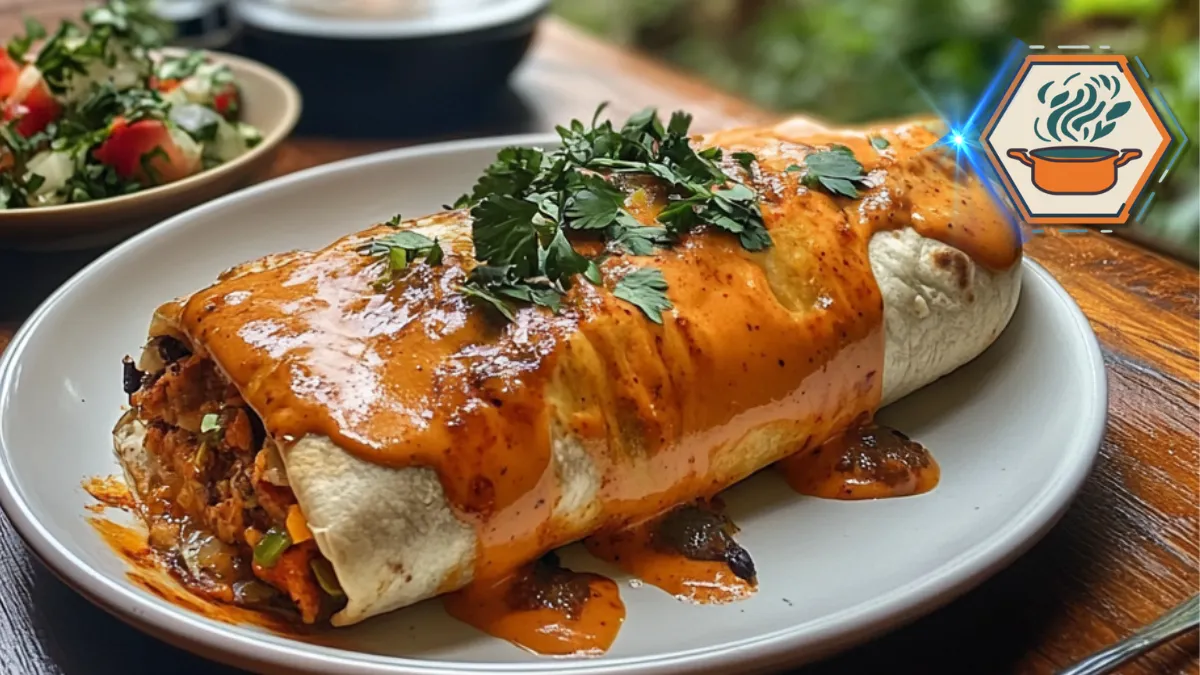Time to read:10 minutes
Table of Contents
Understanding the Basics of Frozen Burritos
What Is a Frozen Burrito?
A frozen burrito is a pre-made burrito, packaged and frozen to preserve it for longer periods. These convenient meals typically include a tortilla filled with ingredients like beans, rice, cheese, and meat. Some even have vegetables or unique seasonings to enhance the flavor.
Frozen burritos first became popular in the mid-20th century. They were designed as quick, affordable meals for busy households. Over time, brands like Amy’s Kitchen, El Monterey, and José Olé gained popularity. Today, you can find them in almost every grocery store.
If you’re curious about the origins of burritos, they come from Mexican cuisine. The traditional version was a simple tortilla filled with meat or beans. However, the frozen version is more of an American innovation. For more details on burritos and their cultural history, check this Wikipedia article.
Why Are Frozen Burritos So Popular?

The appeal of frozen burritos lies in their simplicity. You don’t need to cook an elaborate meal when you have one in your freezer. Here are the main reasons people love them:
- Convenience: Frozen burritos are quick to prepare. You can heat them in a microwave or oven in minutes.
- Affordability: They are budget-friendly compared to dining out or buying fresh ingredients for every meal.
- Versatility: A frozen burrito serves as a blank canvas. You can customize it with toppings, sides, or even turn it into another dish.
For example, many people enjoy turning a frozen burrito into a hearty meal by adding sour cream, guacamole, or fresh salsa.
Common Issues With Frozen Burritos
While frozen burritos are convenient, they aren’t perfect. Here are some common issues people face:
- Texture Problems
The tortilla often becomes soggy when reheated, especially in the microwave. This can ruin the overall experience. - Lack of Flavor
Frozen foods sometimes taste bland. Pre-packaged burritos often lack the bold flavors of fresh, homemade ones. - Uneven Heating
Many frozen burritos heat unevenly, leaving cold spots inside. This is particularly common with larger burritos or when microwaving them.
These challenges, however, can be fixed with the right tools and techniques, which we’ll discuss in the next section.
Tools You’ll Need for Burrito Upgrades
Upgrading a frozen burrito is easier when you have the right equipment. Here’s a quick list of tools you might need:
- Microwave
- Perfect for a quick reheat, but often leaves burritos soggy.
- Oven
- Provides a more even heat and can crisp the tortilla.
- Air Fryer
- This is the best tool for achieving a crispy texture. It’s fast and locks in flavor.
- Kitchen Essentials
- A cutting board is handy if you’re adding fresh ingredients.
- A skillet allows you to fry the burrito for a crunchy, golden-brown exterior.
- Spatulas or tongs make flipping easier if you’re cooking on a stovetop.
Using these tools, you can avoid common problems like sogginess or blandness. For instance, using an air fryer ensures a crispy tortilla while keeping the filling warm and flavorful.
To learn how to make crispy burritos without an air fryer, check out our guide on how to keep pancakes crispy. This method can be applied to burritos as well!
Methods to Jazz Up a Frozen Burrito
Simple Additions to Boost Flavor
Enhancing a frozen burrito doesn’t need to be complicated. By adding a few ingredients, you can transform a simple meal into something exciting and delicious.
Spices and Seasonings
Introduce bold flavors with everyday spices:
- Chili powder: Adds a smoky and mildly spicy kick.
- Cumin: Brings a warm, earthy taste that complements Mexican-style dishes.
- Paprika: Offers subtle sweetness and vibrant color.
To use, lightly sprinkle these spices on the burrito before reheating or mix them into a sauce for dipping.
Fresh Ingredients

Incorporating fresh elements elevates both flavor and texture:
- Cilantro: Adds a bright, herbaceous flavor.
- Lime juice: A squeeze of lime enhances acidity and freshness.
- Diced onions: Provides crunch and sharpness.
These ingredients are best added after reheating to maintain their freshness.
Toppings and Garnishes
A variety of toppings can turn a frozen burrito into a gourmet experience.
Classic Options
- Shredded cheese: Melts perfectly for a gooey, rich texture.
- Sour cream: Adds creaminess and balances spiciness.
- Guacamole: Brings a creamy, avocado-rich flavor.
To use, simply spread the toppings over the burrito after reheating.
Creative Choices
For something unique, try:
- Pickled jalapeños: Deliver tangy heat.
- Salsa verde: A bright, tangy sauce made from tomatillos.
- Hot honey: Adds a surprising sweet-and-spicy touch.
Experiment with these toppings to find your perfect combination.
Reheating Techniques for Better Texture
The way you reheat your frozen burrito can significantly affect its taste and texture. Here’s how to get the best results:
Achieving Crispiness in an Air Fryer
- Preheat the air fryer to 375°F (190°C).
- Place the burrito inside and cook for 10 minutes, flipping halfway through.
The air fryer creates a crispy outer layer while keeping the inside moist.
Oven-Baked Burrito Perfection
- Preheat your oven to 400°F (200°C).
- Wrap the burrito in foil to retain moisture.
- Bake for 25-30 minutes, then remove the foil for the last 5 minutes for crispness.
This method ensures even heating and a satisfying crunch.
Quick Fixes for Microwave Users
- Remove any outer packaging and place the burrito on a microwave-safe plate.
- Cover with a damp paper towel to prevent it from drying out.
- Heat on high for 2-3 minutes, flipping halfway through.
While not as crispy as other methods, this is the fastest option.
Stuffing the Burrito with Extra Ingredients

Elevate your frozen burrito by adding fillings that provide additional texture and flavor.
Adding Rice, Beans, or Grilled Vegetables
- Rice: Use seasoned rice like cilantro-lime or Spanish rice.
- Beans: Black beans or refried beans work well for a protein boost.
- Grilled vegetables: Bell peppers, zucchini, or corn add a smoky, fresh taste.
To add these, carefully open one end of the burrito, stuff in your ingredients, and reheat as needed.
Protein Options
For a heartier meal, consider these:
- Shredded chicken: Cooked with taco seasoning for extra flavor.
- Ground beef: Seasoned with cumin and chili powder.
Mix these proteins with cheese or beans before reheating for a cohesive taste.
Check out our guide on perfect meatloaf every time for another meal that can benefit from small enhancements.
Advanced Recipes and Customization
Transforming Your Frozen Burrito into a New Dish
Frozen burritos can be more than just a quick meal. With a few creative tweaks, they can become exciting dishes that taste homemade. Here are two ideas to inspire you:
- Burrito Casserole Recipe: Preheat your oven to 375°F (190°C). Place frozen burritos in a baking dish, cover them with enchilada sauce, shredded cheese, and chopped vegetables like bell peppers or onions. Bake for 25-30 minutes until bubbling. Serve with sour cream or guacamole.
- Smothered Burrito with Enchilada Sauce: Heat your burrito in the oven or microwave. Once warm, place it on a plate and pour heated enchilada sauce over the top. Sprinkle with shredded cheese, chopped cilantro, and diced tomatoes. This simple enhancement adds bold flavor to your meal.
Pairing Your Burrito with Delicious Sides
A burrito isn’t complete without the right sides. These pairings can make your meal more satisfying and flavorful:
- Mexican Rice or Quinoa Bowls: These are perfect companions. Cook Mexican rice or quinoa with diced tomatoes, black beans, and spices like cumin and paprika for an authentic taste.
- Homemade Tortilla Chips and Dips: Slice tortillas into triangles, brush with olive oil, and bake until crispy. Serve with guacamole, salsa, or queso for a delightful side.
Incorporating International Flavors
Expand the flavor profile of your burrito with inspiration from global cuisines:
- Asian-Inspired Toppings: Add a drizzle of Sriracha mayo, pickled vegetables, or kimchi for a spicy, tangy twist. This blend brings bold flavors to your meal.
- Greek-Style Burritos: Use tzatziki, feta cheese, and fresh cucumbers to create a Mediterranean-inspired burrito. This combination adds freshness and creaminess.
Cooking Hacks for Perfect Burrito Results
Maximize the quality of your frozen burrito with these helpful cooking techniques:
- Wrapping Burritos in Foil for Even Heating: Whether you’re using an oven or toaster oven, wrapping the burrito in foil ensures consistent heating. It prevents the tortilla from becoming too crispy while keeping the filling warm and flavorful.
- Using a Sandwich Press for a Crispy Exterior: For a burrito with a golden, crispy shell, place it in a preheated sandwich press. The even pressure toasts the tortilla perfectly, adding a satisfying crunch.
For more ideas on maintaining burrito texture and flavor, check out our guide on keeping madeleines moist.
Pro Tip:
When experimenting with recipes, don’t hesitate to try different ingredients to match your taste.
Frequently Asked Questions and Expert Tips
FAQs About Frozen Burritos

How long should you cook a frozen burrito? Cooking time depends on the method used. For microwave cooking, most frozen burritos take about 2-3 minutes on high. If using an oven, preheat to 375°F (190°C) and bake for 25-30 minutes. Always check the packaging for specific instructions, as cooking times can vary by brand and size.
Tip: To ensure even heating, rotate the burrito halfway through cooking.
What’s the best way to avoid sogginess? Avoiding sogginess requires proper heating techniques. When using a microwave, wrap the burrito in a paper towel to absorb excess moisture. If using an oven, consider placing the burrito on a wire rack to allow air circulation. This prevents the bottom from becoming mushy.
Can you refreeze a thawed burrito? Refreezing a thawed burrito is not recommended. The texture and flavor may degrade, and there’s a risk of bacterial growth. If the burrito has been kept at a safe temperature for a short time, consuming it is preferable to refreezing.
Healthier Alternatives for Frozen Burritos
Choosing low-sodium and whole-grain options Many frozen burritos are high in sodium, which can lead to health concerns if consumed frequently. Opt for brands labeled as low-sodium or made with whole-grain tortillas for a healthier choice. Whole grains provide extra fiber, supporting better digestion.
Adding fresh vegetables for extra nutrients Boost the nutritional value of your frozen burrito by adding fresh toppings such as diced tomatoes, avocado slices, or shredded lettuce. These additions enhance the taste and provide essential vitamins and minerals.
Learn more about balancing meals with our bone broth preparation guide.
Common Mistakes to Avoid
Overheating or undercooking Overheating can dry out the tortilla and make the filling unappetizing. On the other hand, undercooking might leave the center cold. Use a food thermometer to ensure the internal temperature reaches 165°F (74°C) for safety.
Skipping essential garnishes or toppings Neglecting garnishes such as salsa, sour cream, or guacamole can make the meal feel incomplete. These extras not only add flavor but also contribute to the overall experience of enjoying a burrito.
Expert Suggestions for Perfecting Your Frozen Burrito Game
Recommended brands for quality frozen burritos Certain brands consistently deliver better quality. Look for burritos made with organic ingredients or those that clearly list whole foods on the ingredient label. Trader Joe’s and Amy’s Kitchen, for instance, are popular choices among frozen food enthusiasts.
Read more about food safety guidelines on CDC’s website.
Creative ingredient combinations from chefs To elevate a frozen burrito, experiment with creative add-ins. Top with crumbled queso fresco and cilantro, or drizzle with chipotle mayo for a smoky kick. Chefs also recommend pairing burritos with a side of lightly dressed greens for a balanced plate.
By following these tips and avoiding common pitfalls, you can transform a simple frozen burrito into a delicious and satisfying meal.

